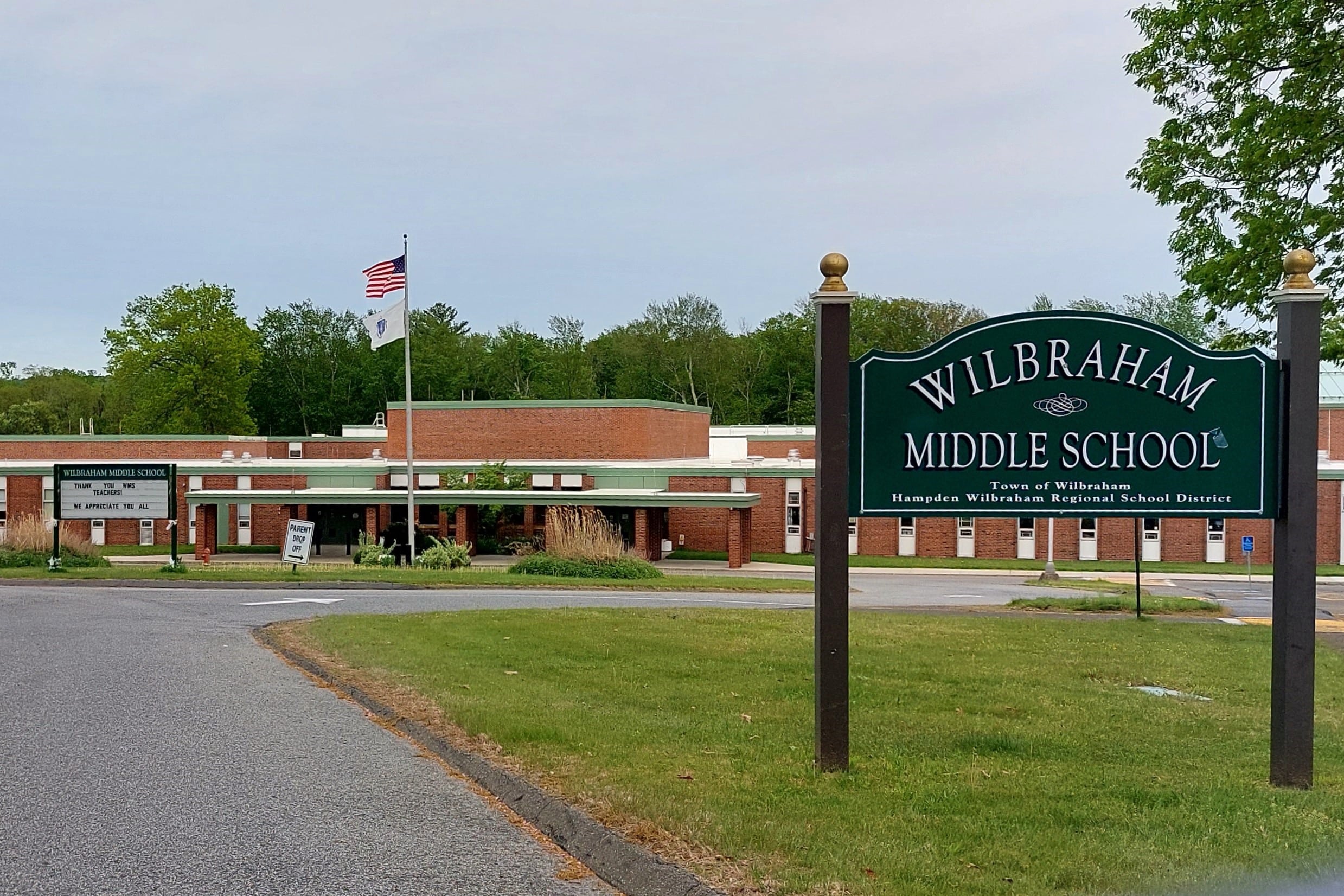WILBRAHAM — Town leadership from Hampden and Wilbraham agrees that the Hampden-Wilbraham Regional School District needs several capital projects completed over the next few years. Now, it is a matter of agreeing on how to fund them.
Superintendent John Provost spoke about the needs of Wilbraham Middle School students on Oct. 9.
In addition to an overcrowding problem at the school, there are several capital projects that must be tackled, including updates to the HVAC system.
The responsibility of paying for the projects has been a point of contention between member towns Hampden and Wilbraham, as the school is in the latter town, but students who live in the former also attend it. According to the Regional Agreement governing the district, capital costs are the responsibility of the town where the school is located unless it is a regional school. Then, the costs are divided reflecting enrollment percentages. Currently, that leaves Wilbraham covering about 81% of the costs and Hampden paying about 21%.
The district has proposed an updated regional agreement that would classify Wilbraham Middle School as a regional school. Leadership from both towns met several times to negotiate this earlier in the year but found themselves at a stalemate.
“What’s it going to take to get this done?” Provost asked.
Hampden Selectboard member Donald Davenport responded, “We understand we need the unified school,” but said the ventilation system was a known issue for nearly 10 years, and there should be a “carve-out,” exempting that project from Hampden’s responsibility. He said it was important for the health of students, teachers and staff at the building.
After confirming that the HVAC system was the sole item Hampden was seeking a carve-out for, Wilbraham Select Board Chair Michael Squindo suggested that towns revisit a framework Hampden had previously suggested.
School Committee member Tim Collins said there was a larger issue with the school. “There’s no room in that building” to sufficiently provide a full education for students, he said, particularly citing a lack of vocational education. He said the positions available in the Career Technical Education Training program at the Lower Pioneer Valley Educational Collaborative were not adequate to teach the number of students seeking such programs. “We’re shortchanging our kids,” he said, before predicting that the district’s reputation will suffer unless the issue is addressed.
Pivoting to a different capital issue, Assistant Superintendent for Finance, Operations and Human Resources Douglas Slaughter said the doors and windows at Wilbraham Middle School needed replacement, as do the roofs at Mile Tree and Stony Hill schools. In March, the district submitted statements of interest to enter the three projects into the Massachusetts School Building Authority’s accelerated repair program. The agency reimburses municipalities for large-scale building repairs and construction. In 2024, the accelerated repair program reimbursed 57% of eligible costs, Slaughter said, adding that he believed it would be a similar rate this year.
The program consists of two phases. First, there would be a feasibility study that examines all potential options for repairs or replacement, as well as an estimated cost. The second step is construction. The district would need to follow the MSBA’s strict timeline for each step, including when the towns must vote to fund the steps. Slaughter said the MSBA completed site visits in August and will vote on whether to accept any or all the projects on Oct. 29. The town has 90 days after being invited into the program for voters at Town Meeting to approve funding the feasibility study. The construction must be approved 12 months after the invitation.
Slaughter’s “rough” estimate for the feasibility study for the doors and windows was between $6 million and $7 million. To put that in perspective, School Committee member Sean Kennedy said Wilbraham would be required to pay about $3.01 million, after the reimbursement.
“It’s pricey,” he acknowledged, but said the funding comes from a portion of the state’s sales tax. “We’ve helped build buildings and put roofs on buildings across the commonwealth,” he said. “We should get some of that, too.”
Pointing to the overcrowding at Wilbraham Middle School, Squindo said residents will ask, “Why invest in a building we’re not sure the future of?” Slaughter recalled that the school’s roof was replaced about five years ago. He said an agreement with the MSBA includes an understanding that the school will be used for educational purposes for the next 25 years. If the building is sold or otherwise falls out of use, he said the agency will want the money returned in some form.
Squindo reasoned that the work needs to be done at the middle school and paying 80% of the project after the reimbursement is less than paying 80% of the entire project.
When asked if the HVAC can be covered by the accelerated repair program, Slaughter said it could, but that the MSBA requires a building envelope to be secure and repaired before it will pay for internal projects. Therefore, the windows and doors must be tackled first.
Slaughter estimated the feasibility studies for the roofs at Stony Hill and Mile Tree schools will cost about $9 million combined. As non-district schools, Wilbraham would be responsible for all the non-reimbursable costs.



